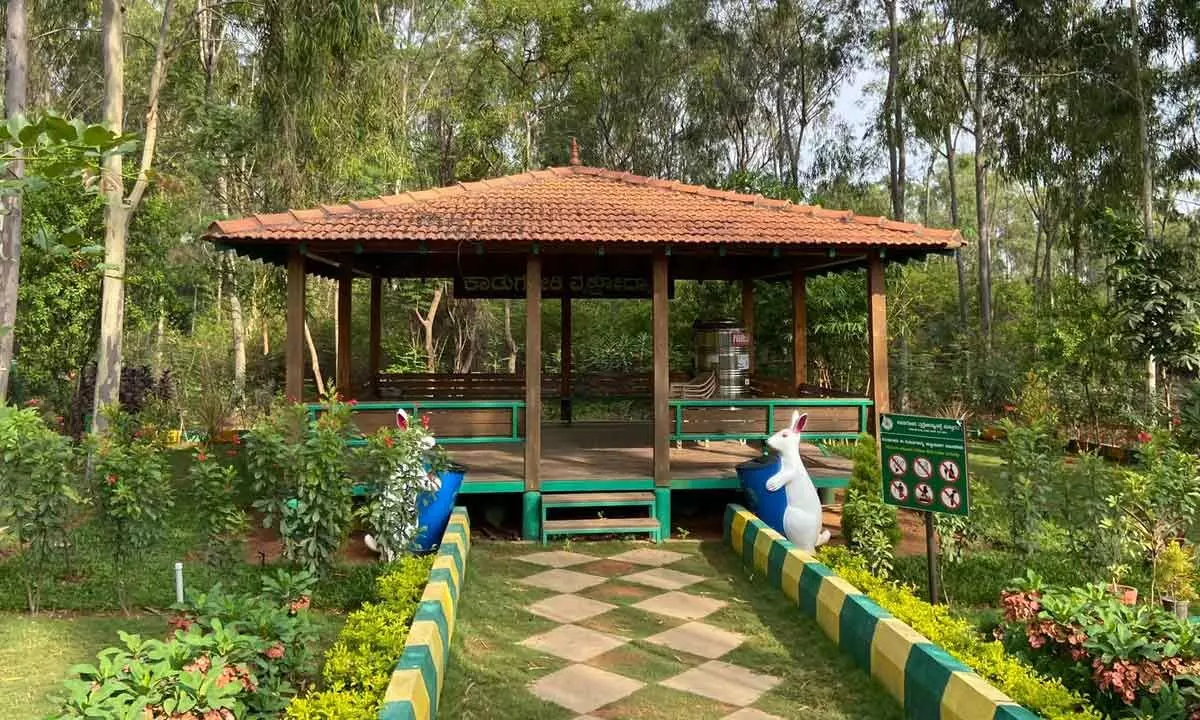Kadugodi – Imaginations of a forest in an urban space

The Kadugodi Tree Park in Bengaluru is spread over 22 acres of a healthy ecosystem, right in the middle of a bustling city. It wascreated to promote the conservation of biodiversity and forests, keeping in mind that the Whitefield area is home to several IT companies and has undergone rapid urbanisation in recent years. It has also been created with an objective to promote tourism and it is very common to see tourists and locals, especially on weekends and holidays.
However, one concern that arises with such parks is that though conservation remains the stated goal, aestheticisation of the landscape often occurs in tandem with a growing tourism footprint. This is undesirable because it often involves planting or introducing exotic plants and animals, these pose a threat to the endemic species and ultimately do more harm than good. Furthermore, the presence of tourist amenities like children’s parks, a mini gym and a walkway only add to these concerns.
Walking through the park, one can see signages with the names oftrees, as well as birds and butterflies commonly sighted there. Thesign boards include Kannada names as well, indicating that there was some effort towards more inclusiveness and a focus on native species. However, with increasing footfall, noticing several species has become difficult.
This is reflected in the fact that even on making an early morning visit, I was not able to hear or identify more than a handful of bird and butterfly species. Also, I noticed an artificial pond housing water lilies as well as another pond that had a crocodile as one of its inhabitants. There is an insect house that is supposed to facilitate mating and reproduction of endemic insects. There were also bird baths placed at strategic locations.
A guard on duty informed me that some visitors often harm the animals by pelting them with stones, this is extremely alarming. In spite of these drawbacks, we were able to spot a large-billed crow. Unlike the common house crow, it is not to be found in urban spaces. That we were able to spot one of them indicates that the conservation effort has not been entirely in vain.
Also, I could identify several ants on different plants, and moths as well as spider webs close to the forest floor. These are the species that often become vulnerable due to urbanisation. It was indeed heartening to note that these species have not become locally extinct. Another commendable feature noticed is that we could observe natural processes like shedding of leaves, change in the colour of leaves due to change in season as well as a jackfruit tree with fruits in different stages of ripening.
The Kadugodi Tree Park indeed has noteworthy aims of conserving biodiversity and ensuring that its benefits reach the wider public, however, it also has some shortcomings owing to the fact that there have been changes in its biodiversity to cater to the needs of tourists and locals who regard it as a “weekend getaway”. It should teach us how to balance sustainable tourism and the conservation of biodiversity.
(Writer is a student at Azim Premji University, Bengaluru).














